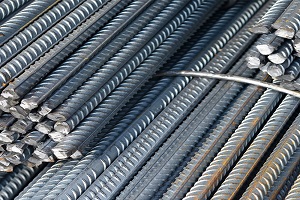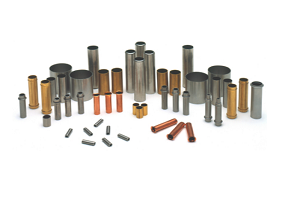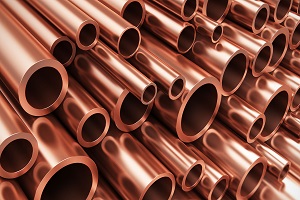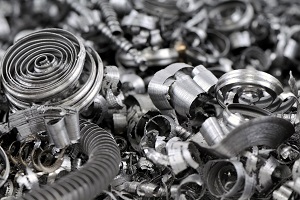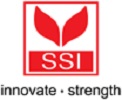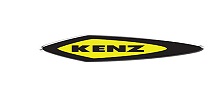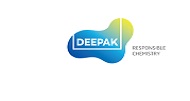Get a Project Report
Profitable Business Ideas for Startups
FERROUS AND NON-FERROUS METALS INDUSTRY:
Metals, both ferrous and non-ferrous, are in high demand for recycling! The global market for used metal recycling is expected to expand dramatically. All ferrous metals have some type of iron in them, which makes them magnetic. Steel is within the category of ferrous metals. Examples include stainless steel, mild steel, carbon steel, cast iron, and wrought iron. Steel is one of the most recyclable materials on the planet. Scrap from industrial operations and products that have reached the end of their useful lives are the most regularly recycled commodities. Appliances, automobiles, industrial gear, and construction supplies are all included. Recycling ferrous metals reduces environmental dangers. These dangers arise when these products are thrown rather than recycled. Scrap metal is now widely used in the steelmaking sector.
Non-ferrous metals, on the other hand, are the polar opposite. They don’t contain iron, aren’t magnetic, and are usually more corrosion resistant than ferrous metals. Non-ferrous metals are grouped together with raw metals. Copper, lead, tin, aluminium, aluminium alloys, and gilding metal are among them. Brass and silver are two examples of non-ferrous metals. Nonferrous metals are employed because they are nonmagnetic and have unique qualities such as strong conductivity and corrosion resistance. Primary and secondary production processes are used to create these metals. The recycling of metal from scraps is referred to as secondary production.
INDIAN MARKET:
The demand for non-ferrous metals in India is predicted to grow at an annual rate of 8%. Stronger government support is needed to inspire the industry, given the good economic prospects and focus on industrial industries. Non-ferrous metals, such as aluminium, copper, zinc, and lead, are used in a variety of industrial and infrastructure applications, including real estate, automotive, defence, and rail, Power etc. The Government of India (GoI) is taking steps to transform India into a global industrial hub and the world’s largest steel manufacturer by boosting output capacity to 300 million tonnes. With a production capacity of around 110 million metric tonnes per year, India is the world’s second largest steel producer behind China. An ambitious “Self-Reliant India” strategy is underway to make India a worldwide manufacturing base for the automotive, defence, aviation, pharmaceutical, and other industries. The strategy boosts demand for ferrous scrap, which is used to make steel and other metals.
Iron & Steel Industry in India:
India’s finished steel consumption grew at a CAGR of 5.2%. India is the world’s second-largest steel producer with production standing at 111.2 million tonnes (MT). The growth in the Indian steel sector has been driven by domestic availability of raw materials such as iron ore and cost-effective labour. Consequently, the steel sector has been a major contributor to India’s manufacturing output. The Indian steel industry is modern with state-of-the-art steel mills. It has always strived for continuous modernisation of older plants and up-gradation to higher energy efficiency levels. Indian steel industry is classified into three categories – major producers, main producers and secondary producers.
GLOBAL MARKET OUTLOOK:
The global market for non-ferrous metals is predicted to increase at an annual rate of 8%. Due to increasing demand for castings from the industrial machinery, vehicle, construction, and electrical segments, the market is likely to rise at a significant rate. In addition, one of the key factors driving market expansion is rising demand for non-ferrous metals due to expanding reasons. Nonferrous metals are utilised in structural construction when less weight, nonmagnetic characteristics, increased strength, and corrosion resistance are required. Electrical and electronic applications are also specified. Copper, aluminium, lead, and zinc are some of the most common nonferrous metals. Metals other than iron, as well as alloys containing little to no iron, are classified as non-ferrous. Brass, titanium, beryllium, nickel, and zinc are examples of non-ferrous metals. Copper is the most popular product, with a substantial part of the global market. The demand for copper tubes, wires, and other copper goods for uses such as electrical, building wire, and plumbing will rise as building and construction expenditures rise. Copper is a natural choice in high-end technical applications due to its chemical and physical properties. Because of increased output at existing facilities and new enhanced capacity at electrolytic plants, Asia-Pacific held the biggest market share.
Iron and Steel Market:
The global iron & steel market is expected to witness rapid growth owing to strong demand from construction and transportation sector. Rapid industrialization and urbanization, particularly in the emerging regions such as Asia Pacific and Central & South America are expected to drive the overall iron & steel market. Steel production is the largest iron ore application. It is basically an iron alloy along with carbon, and other additive metals such as boron, manganese, nickel, titanium, chromium, molybdenum, and vanadium. These additive metals impart different characteristics of steel in order to make it suitable for multiple applications. Major Ores include hematite, limonite, magnetite, goethite, and siderite. Among these different ores, hematite and magnetite are rich in iron and contain more than 60% iron. Based on carbon content, there exists pig iron, wrought iron, and cast iron. Pig iron has dominated the market in the past, and it is expected to continue to dominate the market. Growing demand from the building and construction industry owing to rapid infrastructure initiatives undertaken by governments especially in the emerging regions is projected to aid in industry growth. Building & construction industry is the dominant end-use industry for this iron & steel market followed by automotive & transportation.
TOP PLAYERS WORLDWIDE:
- Alcoa Inc.
- Aluminum Corp. of China Ltd.
- Anglo American plc
- ArcelorMittal
- Arcotech Ltd.
- BHP Billiton plc
- China Baowu Group
- Glencore Xstrata plc
- Gravita India Ltd.
- HBIS Group
- Hebei Iron and Steel Group
- Hindalco Industries Ltd
- Hindustan Copper Ltd.
- Hindustan Zinc Ltd.
- Jiangxi Jutong Co. Ltd.
- MMC Norilsk Nickel JSC
- National Aluminium Company Ltd.
- Nippon Steel & Sumitomo Metal Corporation (NSSMC)
- Precision Wires India Ltd.
- Ram Ratna Wires Ltd.
- Rio Tinto plc
- Shagang Group
- Sumitomo Metal Mining Co Ltd.
- Tata Steel Group
- United Company RUSAL Plc
- Vale S.A.
- Wuhan Iron and Steel Group

